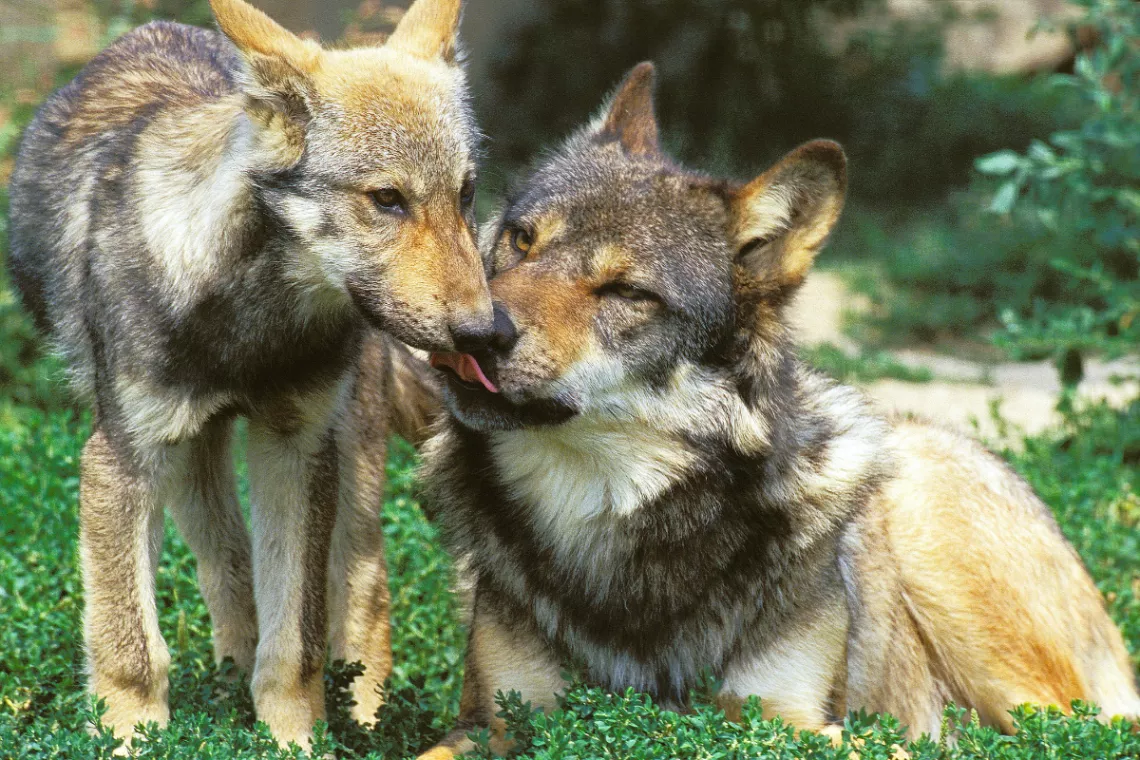Remember those childhood fairy tales of Little Red Riding Hood and the Three Little Pigs?
Myths about the wolf have contributed to their being one of the most vilified species in existence. These deep-rooted myths of wolves as villains have led to broader misconceptions about this species and contributed to their historical desecration in many parts of the country. It is important to address these misconceptions of the wolf and provide science-based education regarding their behavior and effect on our ecosystem.

A “Wolf Myth Buster” Factsheet has been created to address some of these misconceptions related to the wolf in Wisconsin. Some of these are highlighted below:
- Wolves kill to eat. If they have an opportunity to kill more than they can eat at the time, they will always come back to the kill to finish eating. They never waste food.
- Wolves are shy animals and will avoid humans. To date, there have been NO human injuries from wolves documented in Wisconsin, per Wisconsin Department of Natural Resources (WDNR).
- Wolves are good for our forests. Wisconsin has one of the largest deer herds in the country, between 1.3 and 1.6 million in recent years, per WDNR. Wolves keep the deer herd healthy by removing the old, sick and weak, which can slow the spread of diseases like Lyme and Chronic Wasting Disease (CWD).
CWD is fatal to deer and found in almost all counties in Wisconsin, except for a few Northern counties where wolf populations are prevalent.
- Wolves and livestock can coexist. Of an estimated 3.4 million cows in Wisconsin, per USDA, there were only 36 calves were confirmed killed by wolves in 2023.
Out of 58,500 Wisconsin farms, per USDA, only 18 were affected by wolves in 2023 and those farmers were offered compensation for their losses, per WDNR.
Wolves are keystone species and incredibly important to the ecosystems they live in, especially Wisconsin forests. By keeping deer on the move, it ensures that overgrazing on shrubs and tree seedlings is reduced.
When wolves live near people, there is bound to be a certain amount of friction. Personal safety, protecting livestock and perceived impacts on game species are among the considerations of people living in wolf country. But, killing wolves can actually increase livestock predation by removing pack leaders and leaving inexperienced, younger wolves to fend for themselves. There are ways to coexist with wolves and non-lethal management tools should be promoted. Such tools as; fladry, electric fencing, range riders and guard dogs have been tried and can be effective tools. Here are a couple of sites that provide details on alternative non-lethal methods:
- Defenders of Wildlife: Livestock and Wolves
- Wood River Wolf Project: Nonlethal Deterrents
LoveTree Farmstead Cheese, producers of some of the world’s finest and most unique sheep milk cheeses, is a success story of how to coexist with wolves. They have been using sheep guardian dogs since 1994. This allows the livestock to roam in a secure environment, as they are committed to living in a community “where all living creatures can exist in accordance with others.” Click here to find out more about the Guardian Dogs’ story at LoveTree.
Other wildlife factsheets available are listed below. We encourage you to download and share to spread awareness about some of Wisconsin’s misunderstood species.
- Beaver Factsheet provides information about beaver benefits.
- Loon Factsheet provides information about loon protection